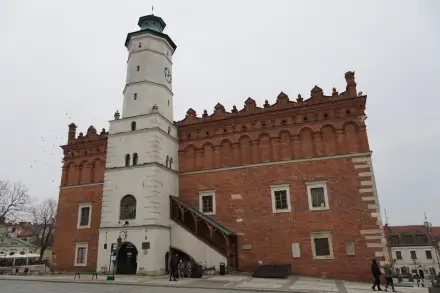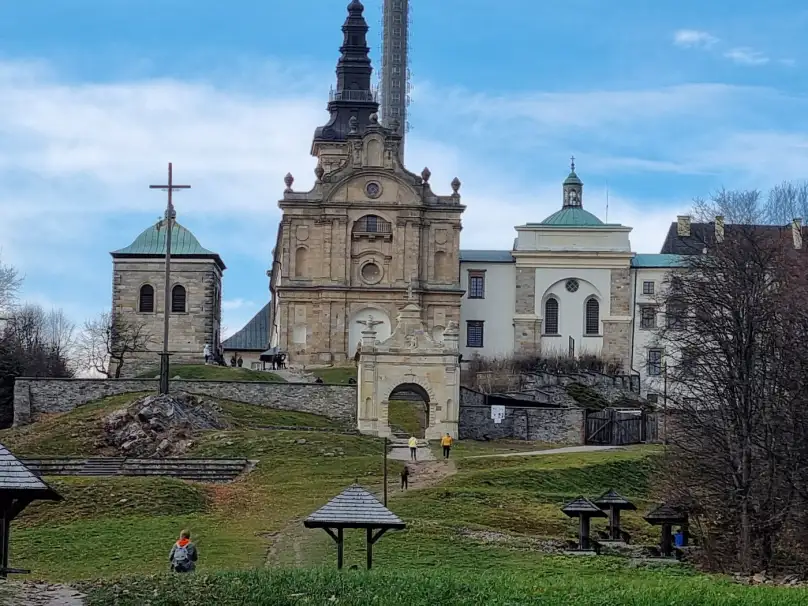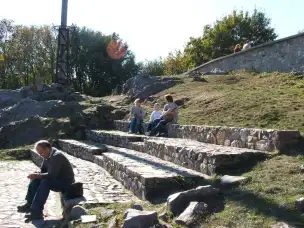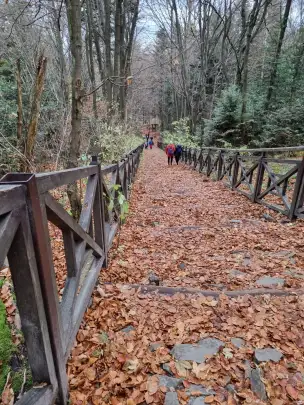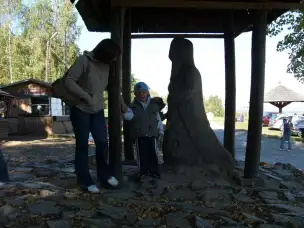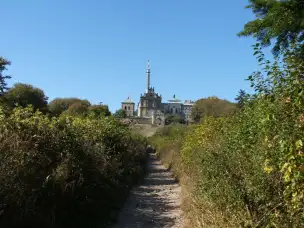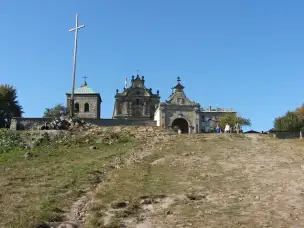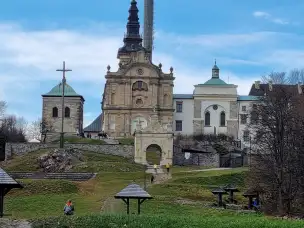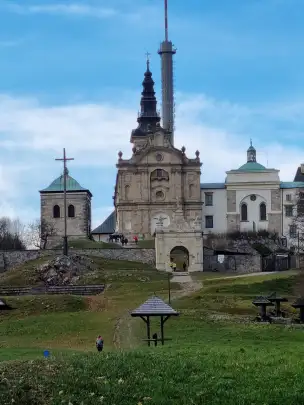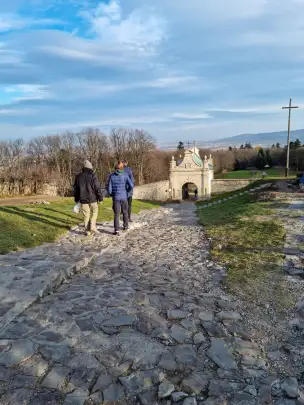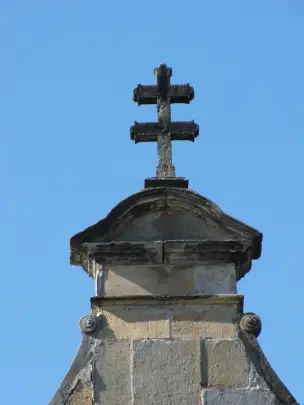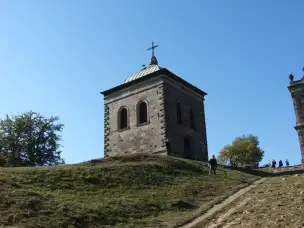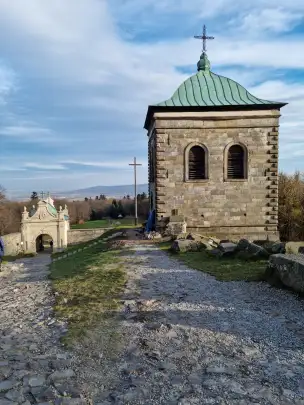One of the oldest monasteries in Poland, founded in the 11th century by St. Adalbert, the bishop of Kraków.
The Benedictine Abbey in Tyniec is widely considered the oldest monastery in Poland. However, not everyone knows that the Black Monks (Benedictines) arrived at Święty Krzyż some 20 to 40 years earlier—although the first stone Romanesque church there wasn't built until the 12th century.
One thing is certain: both Polish monasteries are older than the one at Monte Cassino, which today is a reconstruction, rebuilt after being destroyed during World War II.
There are several routes leading to the monastery, each suitable for a family walk—perfect for a Sunday trip, especially now that shopping on Sundays is banned in Poland and malls are no longer an option.
-
The trail from Nowa Słupia – the most popular route, about 2 km long. It’s not very far, but can be steep in places.
-
The trail from Huta Szklana – the shortest and least steep. Ideal for those who would rather sit in their car for 20 minutes waiting for a parking spot near a supermarket entrance than walk 20 extra meters. The path is paved and occasionally used by horse-drawn carriages.
-
The trail from Święta Katarzyna – the longest, a 16-kilometer hike with some steep sections, recommended for more demanding hikers. Near the end, you can also hop on a horse-drawn carriage if you're tired.
The monastery at Święty Krzyż is an important pilgrimage site, as it houses the relics of the Holy Cross, brought from the Holy Land by a Benedictine monk, Saint James.
Today, the monastery at Święty Krzyż includes a museum that presents the history of the monastery and the relics of the Holy Cross. There is also a souvenir shop and a bookshop on the premises.
Over the centuries, the monastery was destroyed and rebuilt many times. In the 13th century, it was destroyed by the Tatars, and in the 17th century, it was burned down by the Swedes. In the 18th century, the monastery was rebuilt in the Baroque style, and in the 19th century, it was remodeled in the Neo-Gothic style. Its current appearance results from a reconstruction carried out between 1902 and 1910, which still preserved Neo-Gothic elements.
The monastery at Święty Krzyż is known not only for the relics of the Holy Cross, but also for the stunning views of the surrounding landscape. It is located on a mountain of the same name, which rises to 608 meters above sea level. For this reason, the monastery is a popular destination for both tourists and hikers.
Pilgrim or Saint Emeric
A sculpture made of quartzite rock from the Świętokrzyskie Mountains, of unknown age and authorship.
Some claim it dates back to the 13th century, though it's unclear what evidence they base this on.
How does its style differ from that of the so-called Maiden with a Fish from Mount Ślęża—a supposedly Celtic sculpture carved before our era? Both are equally eroded and unreadable, and all we can say about the artist is that he most certainly wasn’t Michelangelo di Lodovico Buonarroti Simoni.
Some say the figure represents Prince Imre (Emeric) of the Árpád dynasty; others claim it is the knight Emeric. There’s even a theory that it’s not a knight at all, but a woman. Yet all of these legends have one thing in common: the belief that this stone pilgrim moves a grain of sand closer to the monastery every year. And when it finally reaches it—the end of the world will come.
Perhaps that's why the Łagów Forest District, after obtaining all necessary approvals from the heritage conservator, decided to solve the issue by concreting the unruly pilgrim into the ground. Who knows—maybe it will work.
Oblate Monastery – Sanctuary of the Relics of the Holy Cross
The Former Benedictine Monastery, which houses the Relics of the Holy Cross, from which both the abbey and the mountain take their name.
The exact year of the abbey's foundation is unknown, but Benedictine tradition attributes its establishment to Bolesław the Brave in the year 1006. What is certain is that the Romanesque church, dedicated to the Holy Trinity, was built between 1102 and 1138 by Bolesław the Wrymouth.
In 1306, Władysław the Elbow-high entrusted the Benedictines with the relics of the Holy Cross, which, according to legend, were a gift from Prince Imre, the Hungarian heir to the throne and son of Stephen I the Saint.
Prince Imre is venerated in the Church as Saint Emeric.
During the reign of the Jagiellonian dynasty, the abbey became the most important religious sanctuary in the Kingdom of Poland.
Władysław Jagiełło visited it on his way to his coronation in Kraków, as well as en route to the Battle of Grunwald.
Since 1936, the monastery has been home to the Missionary Oblates of Mary Immaculate and their novitiate.
In the building that now houses the museum, there once operated the most severe prison in the Second Polish Republic, where Sergiusz Piasecki was incarcerated. It was there that he began writing his famous novel "Lover of the Great Bear" (Kochanek Wielkiej Niedźwiedzicy).
Bell tower from the 18th century
RTCN Święty Krzyż
A 157-meter tall radio and television transmission tower, built in 1966 and located on Łysa Góra.
It is one of the best broadcasting facilities in Europe in terms of signal coverage area.
The signal can be received within a radius of approximately 150 km.
Świętokrzyskie Stone Run
Gołoborze is a folk term referring to treeless areas located on the slopes of mountain ranges. In the Świętokrzyskie (Holy Cross) Mountains, it is one of the largest fields of bare rock blocks in Central Europe.
Unlike the rocky debris fields forming today in the Tatra Mountains, the Świętokrzyskie gołoborza are situated below the upper tree line.
